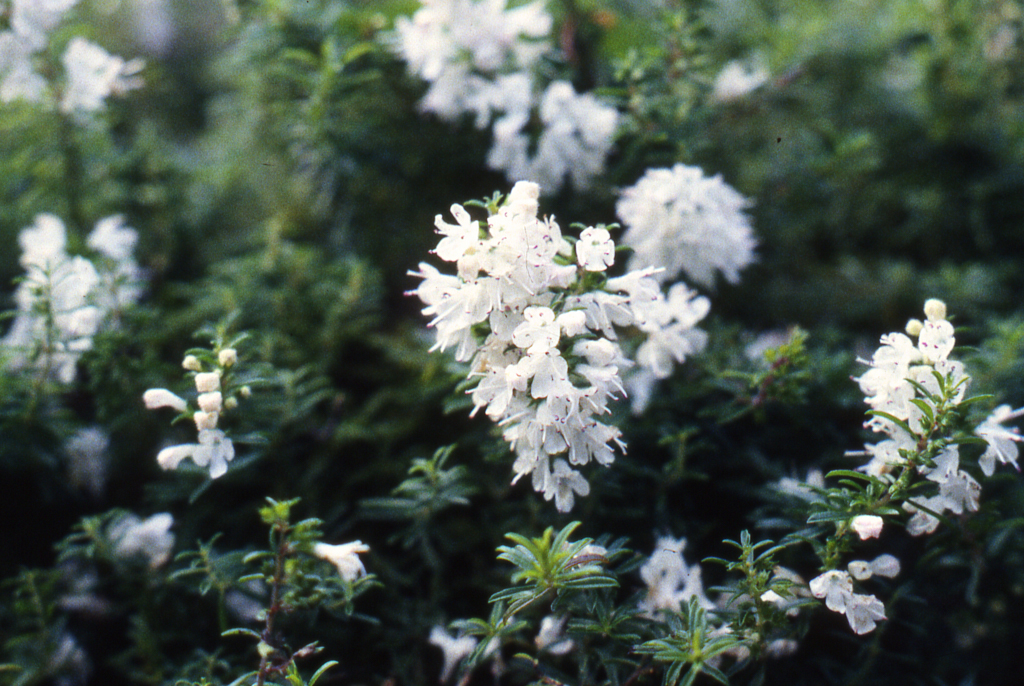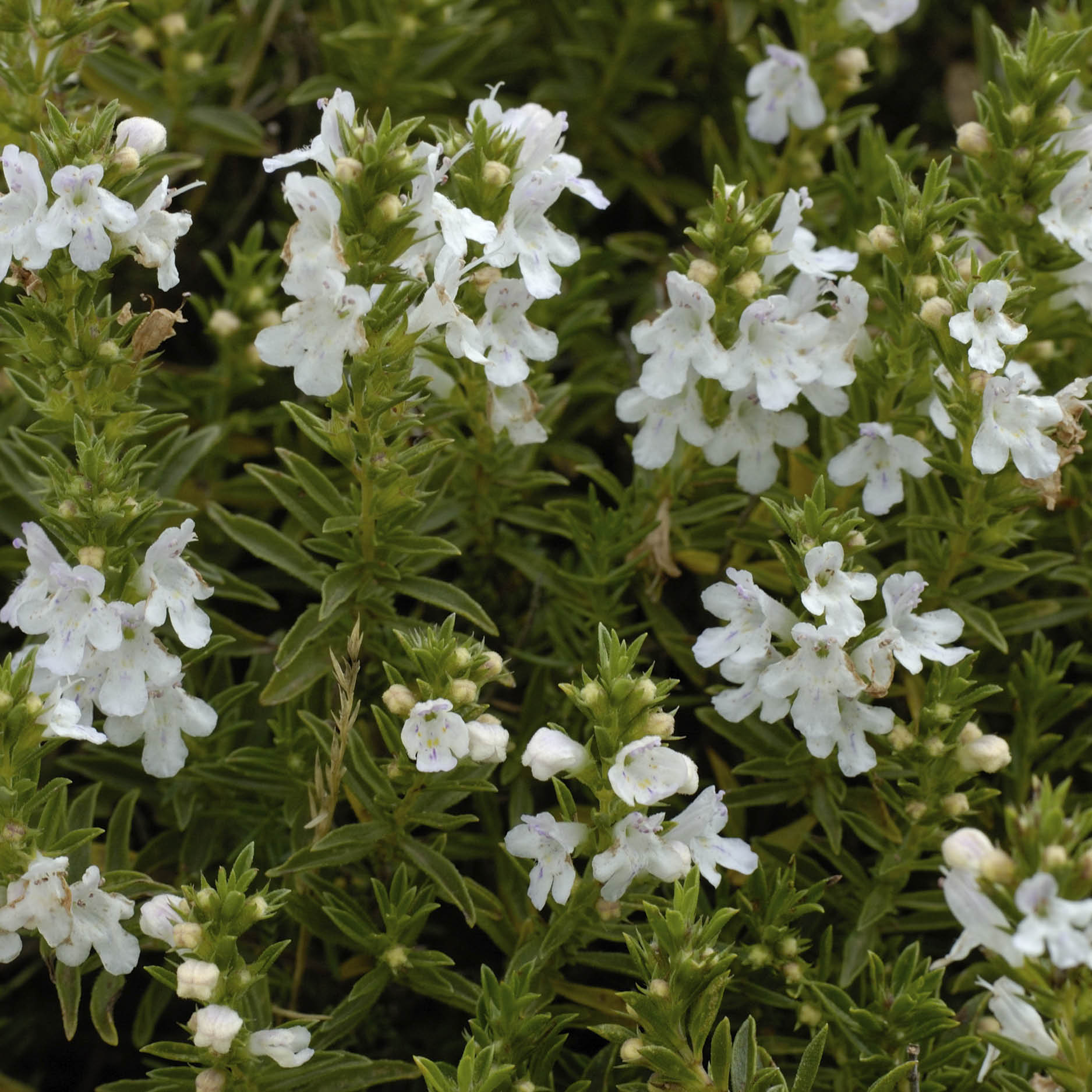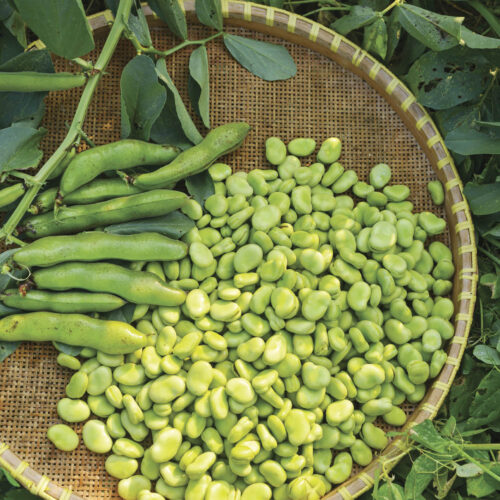Winter savory
2021-05-25T01:42:21+10:00
Spicy, fragrant, warming. This little-known herb is perfect for cool weather meals.
Little known and used, winter savory Satureja montana comes into its own in winter. As the days draw in and cold nights become more frequent, its warm, spicy fragrance and taste enhances the flavour of slow-cooked soups and stews.
It grows as a small woody shrub with tiny dark-green, opposite leaves and white flowers that grow in the leaf axils towards the ends of the somewhat sprawling branches. There is also a prostrate variety that has coarser leaves, larger white flowers and is much lower growing, but is otherwise similar. Other varieties have pink flowers.
How to grow
Winter savoury is easily grown from seed or cuttings, or by detaching rooted pieces and replanting. This is best done in spring, but is usually also successful in autumn. Keep the plants neat by trimming back after flowering. As the soil still holds some some autumn warmth, it’s not too late to plant it now, so you will have leaves available for the depth of winter. Buy plants from your local nursery or online.
Winter savory is in the same family (Lamiaceae) as thyme and rosemary and likes similar growing conditions. In other words a well-drained sandy loam soil and an open, sunny position. But I have found them to be tough little plants that thrive in a variety of positions as long as they do not stay wet for long periods. If you soil is heavy, the try planting in a pot.
Both the low-growing and bushier varieties make great garden edging and because of their strong scent will help to repel pests, while the flowers attract bees and other beneficial insects.
How to use
The fine, spicy flavour of winter savory combines beautifully with beans in particular, but also with peas and other vegetables. Finely chop the leaves and add small amounts to salad dressings, soups and stews. I like to add winter savory to a bouquet garni and then suspend this into the soup or stew and remove before serving. Bouquet garni is the name given to a small bunch of herbs, tied together with a long piece of string and added to sauces, stock, soups, stews and casseroles; in effect any dish that is cooked for more than a few minutes allowing time for the flavours to be absorbed. A classic combination is one bay leaf (fresh is best) with a couple of sprigs of parsley and thyme. Other herbs can be added; the type will depend on the other ingredients of the dish. Don’t add too many though, or the individual flavours will be lost. So with any dish that contains beans, I substitute the winter savory for one of the other three herbs.
Medicinally, winter savory is made into a tea and drunk as a warming and soothing digestive.
If you subscribe to the magazine, you’ll get eight issues of great ideas and tips like the ones in this blog delivered to your door!
* This blog was first published April 2020 and updated May 2021.







